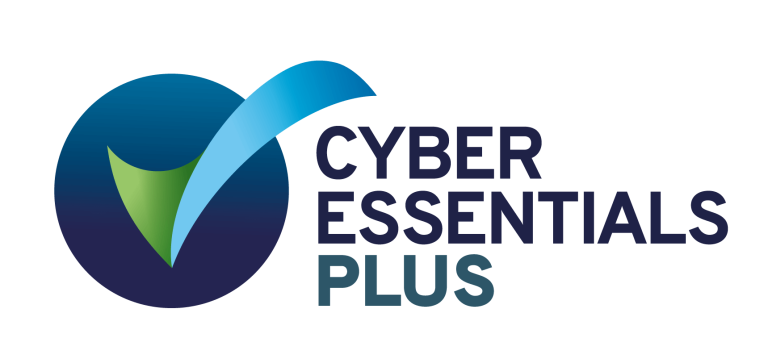In the rail industry, safety is paramount. As a manager responsible for the well-being of your team and the smooth operation of your service, you’re likely familiar with the importance of a Safety Management System (SMS). However, as the understanding of workplace safety evolves, more operators are recognising the value of integrating Fatigue Risk Management Systems (FRMS) into their existing SMS frameworks. But why is this happening, and what benefits does it bring?
This article will explore why operators in the rail industry are increasingly incorporating FRMS into their SMS, the advantages of doing so, and how this integration can improve both safety and operational efficiency.
Understanding the Basics: What Are SMS and FRMS?
What Is a Safety Management System (SMS)?
A Safety Management System (SMS) is a structured approach that organisations use to manage safety risks and ensure compliance with regulatory requirements. It encompasses policies, procedures, and practices designed to identify, assess, and mitigate risks to ensure the safety of both employees and passengers.
Key Components of an SMS
An effective SMS typically includes:
- Safety Policy: A clear statement of the organisation’s commitment to safety.
- Risk Management: Processes for identifying and assessing risks, and implementing measures to mitigate them.
- Safety Assurance: Ongoing monitoring and evaluation of safety performance.
- Safety Promotion: Training and communication efforts to foster a culture of safety within the organisation.
What Is a Fatigue Risk Management System (FRMS)?
A Fatigue Risk Management System (FRMS) is a specialised system designed to manage and mitigate the risks associated with employee fatigue. Unlike traditional approaches that might focus solely on limiting work hours, an FRMS takes a more comprehensive approach, addressing the various factors that contribute to fatigue and implementing strategies to manage these risks effectively.
Key Elements of an FRMS
An effective FRMS includes:
- Risk Identification: Assessing factors that contribute to fatigue, such as work schedules, environmental conditions, and workload.
- Preventive Measures: Strategies to reduce the risk of fatigue, including optimised work schedules and rest periods.
- Monitoring and Reporting: Systems for tracking fatigue levels and identifying when intervention is needed.
- Continuous Improvement: Regularly reviewing and updating fatigue management strategies to ensure they remain effective.
Why Incorporate FRMS into SMS?
Addressing the Limitations of Traditional Safety Management
Traditional SMS frameworks are highly effective at managing a wide range of safety risks, but they often do not adequately address the specific challenges posed by fatigue. Fatigue can significantly impair an employee’s ability to perform safety-critical tasks, leading to mistakes that could have serious consequences.
The Impact of Fatigue
Fatigue affects cognitive function, decision-making, and reaction times. In the rail industry, where employees are often required to work long hours, night shifts, or perform repetitive tasks, the risk of fatigue is high. Integrating an FRMS into your SMS helps to fill this gap, providing a more comprehensive approach to managing safety risks.
Enhancing Safety Culture and Compliance
Incorporating an FRMS into your SMS isn’t just about ticking boxes; it’s about fostering a deeper, more proactive safety culture within your organisation. When employees see that their well-being is a priority, they are more likely to engage with safety initiatives and take an active role in managing risks.
Regulatory Compliance
Additionally, as regulatory bodies increasingly recognise the importance of fatigue management, integrating FRMS into SMS can help ensure compliance with evolving regulations. This futureproofs your organisation against potential changes in legislation and demonstrates a commitment to maintaining the highest safety standards.
Improving Operational Efficiency
While safety is the primary concern, integrating FRMS into SMS can also lead to significant operational benefits. By reducing fatigue-related errors, you can improve overall efficiency, reduce downtime, and enhance the reliability of your service.
Reducing Human Error
Fatigue is a major contributor to human error, which can lead to delays, accidents, and costly repairs. By actively managing fatigue, you reduce the likelihood of these errors, leading to smoother operations and a more reliable service.
How to Successfully Integrate FRMS into SMS
Step 1: Assess Your Current SMS
Before integrating an FRMS, it’s important to assess your current SMS to identify any gaps or areas where fatigue risks might not be adequately addressed. This assessment will provide a clear picture of where improvements can be made and how an FRMS can be most effectively integrated.
Conducting a Gap Analysis
A gap analysis involves comparing your current safety management practices with the requirements of an effective FRMS. This might include reviewing incident reports, analysing work schedules, and gathering feedback from employees about their experiences with fatigue.
Step 2: Develop a Tailored FRMS
Once you’ve identified the areas that need improvement, the next step is to develop a tailored FRMS that addresses the specific needs of your organisation. This system should be designed to complement and enhance your existing SMS, rather than replacing it.
Customising Your FRMS
Every organisation is different, so your FRMS should be customised to reflect the unique challenges and risks your employees face. This might involve developing specific fatigue management policies, implementing new monitoring tools, or providing additional training for employees.
Step 3: Integrate FRMS with Existing Processes
The key to successful integration is ensuring that your FRMS becomes a natural part of your overall safety management approach. This means embedding fatigue management practices into your existing processes and ensuring that data flows seamlessly between the FRMS and SMS.
Aligning Policies and Procedures
Ensure that your fatigue management policies are consistent with other safety policies within your SMS. This might involve updating your incident reporting forms to include fatigue-related data or incorporating fatigue risk assessments into your regular safety audits.
Step 4: Train and Engage Employees
For your FRMS to be effective, your employees need to be fully engaged with the system. This means providing comprehensive training on fatigue management, raising awareness about the risks of fatigue, and encouraging employees to take an active role in managing their own well-being.
Building a Fatigue-Aware Culture
Create a culture where fatigue management is seen as a shared responsibility. Encourage open communication about fatigue, provide regular feedback opportunities, and recognise employees who actively engage with your fatigue management initiatives.
Step 5: Monitor and Continuously Improve
Finally, it’s important to continuously monitor the effectiveness of your FRMS and make improvements where necessary. This involves regularly reviewing data, gathering feedback from employees, and staying up to date with the latest best practices in fatigue management.
Using Data to Drive Improvement
Use the data collected through your FRMS to identify trends and areas for improvement. This might involve adjusting work schedules, refining your monitoring tools, or updating your training programmes to reflect new insights.
Building a Safer Future Through Integrated Fatigue Management
Incorporating an FRMS into your SMS is not just a regulatory requirement—it’s a vital step towards creating a safer, more efficient working environment. By addressing the specific risks associated with fatigue, you can enhance the overall effectiveness of your safety management system, reduce the likelihood of fatigue-related incidents, and foster a culture of safety within your organisation.
Remember, the integration process is not a one-time task but an ongoing commitment to continuous improvement. By regularly reviewing and updating your FRMS, engaging your employees, and staying ahead of regulatory changes, you can ensure that your organisation remains at the forefront of safety management in the rail industry.
Common questions about Incorporating FRMS into SMS.
Why is it important to incorporate an FRMS into an SMS?
Incorporating an FRMS into an SMS is important because it addresses the specific risks associated with fatigue, which traditional safety management systems may not fully cover. This integration enhances safety by reducing fatigue-related incidents and improving overall operational efficiency.
How does an FRMS improve safety culture within an organisation?
An FRMS improves safety culture by demonstrating a commitment to employee well-being and encouraging proactive management of fatigue risks. When employees see that their safety is a priority, they are more likely to engage with safety initiatives and contribute to a positive safety culture.
What are the operational benefits of integrating an FRMS into an SMS?
The operational benefits include reduced human error, improved reliability of service, and fewer incidents that could lead to costly delays or repairs. By managing fatigue effectively, organisations can run more efficiently and maintain higher safety standards.
What steps are involved in integrating an FRMS into an SMS?
The steps include assessing your current SMS to identify gaps, developing a tailored FRMS, integrating it with existing processes, training and engaging employees, and continuously monitoring and improving the system.
How can data from an FRMS be used to improve safety management?
Data from an FRMS can be used to identify trends in fatigue-related incidents, assess the effectiveness of current fatigue management strategies, and drive continuous improvements. This data-driven approach helps ensure that safety management practices remain effective and up to date.


